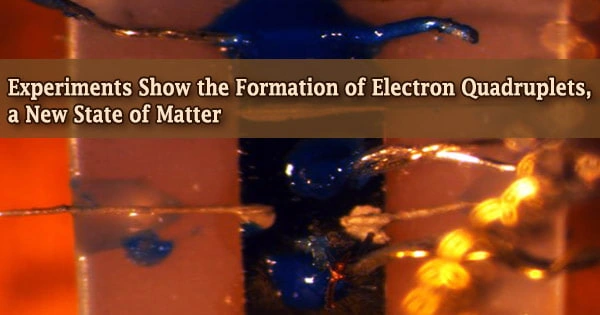The formation of pairs of electrons is the basic principle of superconductivity. Can they, however, be condensed into foursomes?
Recent research suggests they can, and a physicist at KTH Royal Institute of Technology presented the first experimental proof of this quadrupling effect and the mechanism that causes it today.
Professor Egor Babaev and coworkers published evidence of fermion quadrupling in a series of experimental tests on the iron-based material Ba1?xKxFe2As2 today in Nature Physics. The findings come nearly two decades after Babaev anticipated this type of occurrence and eight years after he released a paper indicating that it may happen in the material.
The creation of electron pairs is the fundamental basis of superconductivity. The electrons may overcome any electrical resistance by teaming together, making the substance a superconductor. Simply said, without electron pairs, there is no superconductivity.
The quantum state of superconductivity, a zero-resistance condition of conductivity used in MRI scanners and quantum computers, is enabled via electron pairing. It happens inside a substance when two electrons bind instead of rejecting one other like they would in a vacuum.
Leon Cooper, John Bardeen, and John Schrieffer, whose work was awarded the Nobel Prize in 1972, were the first to characterize the phenomena in a theory. Cooper pairings are essentially “opposites who attract.” Two electrons, which are negatively charged subatomic particles, normally resist each other strongly.
However, at low temperatures, they become loosely bonded in pairs in a crystal, resulting in strong long-range order. Currents of electron pairs no longer scatter as they pass through flaws and obstructions, and a conductor can lose all electrical resistance, transforming into a new state of matter known as a superconductor.
For a fermion quadrupling state to occur there has to be something that prevents condensation of pairs and prevents their flow without resistance, while allowing condensation of four-electron composites.
Egor Babaev
The theoretical concept of four-fermion condensates has only recently gained widespread acceptance.
“For a fermion quadrupling state to occur there has to be something that prevents condensation of pairs and prevents their flow without resistance, while allowing condensation of four-electron composites,” Babaev says.
Because the Bardeen-Cooper-Schrieffer theory didn’t account for such behavior, when Vadim Grinenko, Babaev’s experimental partner at Technische Universtät Dresden, discovered the first hints of a fermion quadrupling condensate in 2018, it called into question years of scientific consensus.
Three years of experimentation and study at numerous universities followed in order to confirm the findings. According to Babaev, one of the most important findings is that ferm ionic quadruple condensates spontaneously breach time-reversal symmetry.
In physics, time-reversal symmetry is the process of substituting the term for the time in formulae or equations with its negative to represent an event in which time flows backward or all movements are reversed.
The fundamental rules of physics remain unchanged when time is reversed. That is also true for normal superconductors: if the direction of time were reversed, the superconducting state of a typical superconductor would remain the same.
“However, in the case of a four-fermion condensate that we report, the time-reversal puts it in a different state,” he says.
“It will probably take many years of research to fully understand this state,” he says. “The investigations raise a slew of new issues, exposing a slew of other peculiar features linked with its response to heat gradients, magnetic fields, and ultrasound that have yet to be fully understood.”
Contributing to the research were scientists from the following institutions: Institute for Solid State and Materials Physics, TU Dresden, Germany; Leibniz Institute for Solid State and Materials Research, Dresden; Stockhom University; Bergische Universtät at Wuppertal, Germany; Dresden High Magnetic Field Laboratory (HLD-EMFL); Wurzburg-Dresden Cluster of Excellence ct.qmat, Germany; Helmholtz-Zentrum, Germany; National Institute of Advanced Industrial Science and Technology (AIST), Japan; Institut Denis Poisson, France.





